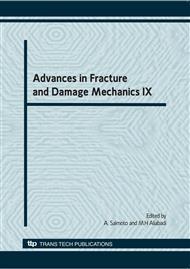p.217
p.221
p.225
p.229
p.233
p.237
p.241
p.245
p.249
Three-Dimensional Surface Heat Transfer Coefficient and Thermal Stress Analysis for Ceramics Tube Dipping into Molten Metal
Abstract:
The low pressure die casting machine has been used in industries because of its low-cost and high efficiency precision forming technique. In the low pressure die casting process is that the permanent die and filling systems are placed over the furnace containing the molten alloy. The filling of the cavity is obtained by forcing the molten metal, by means of a pressurized gas, to rise into a ceramic tube, which connects the die to the furnace. The ceramics tube, called stalk, has high temperature resistance and high corrosion resistance. However, attention should be paid to the thermal stress when the ceramics tube is dipped into the molten metal. It is important to reduce the risk of fracture that may happen due to the thermal stresses. To calculate the thermal stress, it is necessary to know the surface heat transfer coefficient when the ceramics tube dips into the molten metal. In this paper, therefore, the three-dimensional thermo-fluid analysis is performed to calculate surface heat transfer coefficient correctly. The finite element method is applied to calculate the thermal stresses when the tube is dipped into the crucible with varying dipping speeds and dipping directions. It is found that the thermal stress can be reduced by dipping slowly when the tube is dipped into the molten metal.
Info:
Periodical:
Pages:
233-236
Citation:
Online since:
November 2010
Authors:
Price:
Сopyright:
© 2011 Trans Tech Publications Ltd. All Rights Reserved
Share:
Citation:


